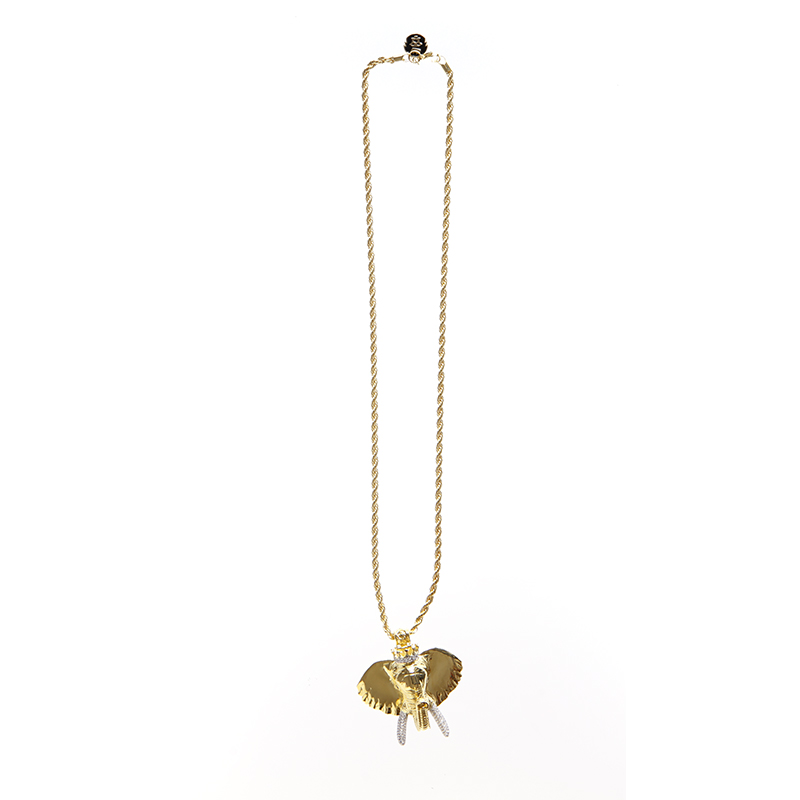The theme we chose in this occasion to address the function of the jewel in our world and in the one of ancient societies is communication, and more precisely identity communication. Why should we speak about identity? Because, as we all know very well, this is a time of diffused political fragmentation, of strong cultural uncertainty, and communicating who we are, who we would like to be and even who we would like others to become, is an element of crucial importance. All of this can be tightly bound to jewels, both present and ancient. Seeing how the jewels were used in past times for this purpose, and how they are still used will help us, in the end, to understand ourselves.
The theme we chose in this occasion to address the function of the jewel in our world and in the one of ancient societies is communication, and more precisely identity communication. Why should we speak about identity? Because, as we all know very well, this is a time of diffused political fragmentation, of strong cultural uncertainty, and communicating who we are, who we would like to be and even who we would like others to become, is an element of crucial importance. All of this can be tightly bound to jewels, both present and ancient. Seeing how the jewels were used in past times for this purpose, and how they are still used will help us, in the end, to understand ourselves.
Jewellery is often considered as useless, opulent items with no other function than decorative. The functional jewellery on display demonstrates the exact opposite. Seals, warriors’ jewellery, Turkmen jewels, Kuchi jewels and the bling bling items of rappers, have a specific function.
Sigillo a stampo con unicorno
Indus Valley Civilization
ca 2600-2200 BC,
Indo-Pakistani subcontinent Stamp seal with unicorn,
“standard” and eight written markings
Fired soapstone Dimensions
Private Collection
This seal displays the same tiny spheres under the “standard” that could indicate drops of liquid. The eight ancient Indus markings have never been deciphered and the language in which they are written is unknown.
Sigillo a stampo circolare
Central-Southern Asian civilizations
ca. 2200-1800 BC.
Circular stamp seal with snake,
carnivore and other patterns (front);
winged goat (?) and tulip (back)
Soapstone fired at high temperature
Dimensions: 2,5 x 0,9 cm
Private Collection
This double-sided seal shows images and symbols of lost Central Asian mythologies from 4000 years ago. The snake, mythological animals and wild tulip, a common flower in Afghanistan and the mountainous regions of internal Central Asia, appear surrounded by numerous carvings, in an authentic horror vacui.
Tre collane di perle ovali e rettangolari
Modern agate workshops
in Khambhat
(Gujarat, India)
1990
Three oval and rectangular bead necklaces
in high quality carnelian Carnelian (kiln-fired agate)
Dimensions: Beads from 2 to 2.5 cm in length
and 1-1.2 cm thick
Private Collection
The red color explains the ancient name of the stone (from medieval latin corneolus, a small red fruit); but it also symbolically links carnelian to sun and human blood.
Coppia di bracciali qasli bilezik
Traditional unknown workshop
A city in Central Asia (Turkmenistan, Afghanistan or North-East Iran)
Pair of qasli bilezik bracelets,
early XX century
Gilded silver with mercury amalgam,
carnelian
Dimensions: each bracelet
7 x 4.5 x 0.6 cm
Private Collection
Qasli bilezik bracelets are an indispensable part of a nomadic tribal Turkmen woman’s dowry. The gildings are abstract spiral patterns that, according to some, are reminiscent of flames and bird wings – a symbolic link with heavenly spaces. The ends of the bracelets, in the shape of five consecutive talons, look like the claws of a bird of prey.
Collana con tre pendenti di tipo ta’wiz
Kuchi nomad jewels
Afghanistan or northern Pakistan,
ca. 1980 Necklace with three ta’wiz pendants,
embossed and set Silver and copper alloy,
amber or copal, red opaque glass
Dimensions: each ta’wiz is
ca 5 x 5 x 0.7 cm
Private Collection
The embossing on the ta’wiz is based on the use of bronze or brass punches and matrixes that created tiny appliques on the rectangular containers. The ornament is completed with amber or, more probably, copal beads and old, cylindrical red glass beads, probably to imitate much rarer coral.
Gioielleria bling bling
Bling bling jewels
Kingice, Jungle Julz collection (designed by Snoopdogg)
Contemporary production
Gold-plated chain, crowned elephant head
Dimensions: elephant head,
6 x 3 x 4.3 cm
Private Collection
The crowned elephant head which acts as a pendant on this gold-plated chain is an obvious and proudly worn reference to the African origins of Afro-American communities in the United States.




















Follow us on social networks
Subscribe to the newsletter